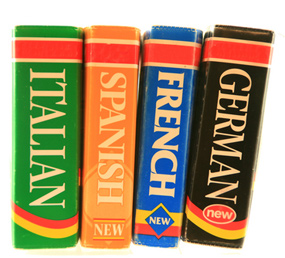 |
| Had to know where to find this |
But I digress...
Obviously, you could take a language class to learn the necessary vocabulary; or purchase an expensive software program like Rosetta Stone or Pimsleur Approach. But most of us don't have the time or the money set aside for those kinds of commitments. But there are alternatives.
Do a quick search on iTunes, and you'll find a waide array of free language lessons. There are some fun podcasts from Radio Lingua called Coffee Break Spanish--though there are more languages than Spanish. Each one is 15-20 minutes and encourages interaction to better learn pronunciation. There are also one-minute crash courses in Greek, Arabic and Mandarin. Living Language is not free, but there is a "free downloads" section that offers freebies like a pocket phrase guide to help you learn a few things before heading on your trip.
The BBC offers intruction on 40 languages, for no cost at all. Users select the desired language and then can choose from a variety of vocabulary categories in the "holiday phrases" link, such as food and drink and shopping. The downloads are accompanied by cultural notes and games, and there is even a beginners' course for those who have at least three months before their trip.
If you're willing to spend a little bit, try Livemocha, a networking site that connects people from different parts of the world and offers basic intruction in a given language. The program facilitates learning through actual communication with someone else, hands down the best way to learn a language. It costs $9.95 for one month of unlimited access, and $99.95 for a year.
So if you are heading to an international destination--whether for a week or ten--why not take some time to learn a few words. It will help you better interact, and make you a more cultured individual--and who doesn't want that?
Oh, and the answer to my first question is...¿Cómo se dice...
Just in case you were curious.


No comments:
Post a Comment